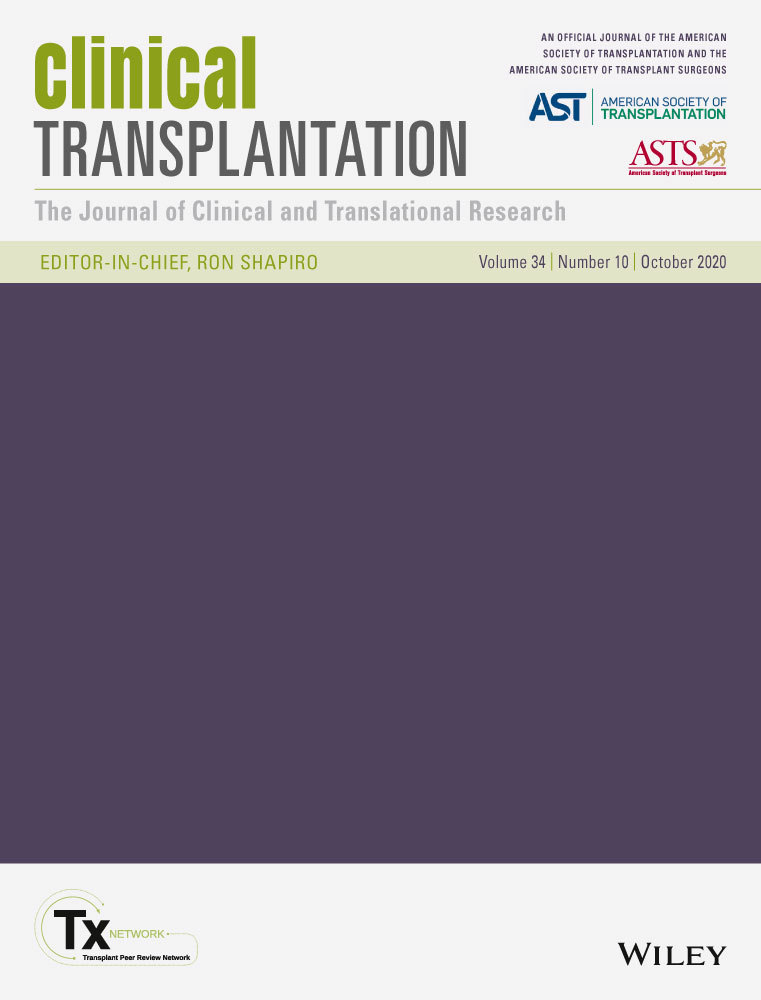Living vs deceased donor liver transplantation in cholestatic liver disease: An analysis of the OPTN database
Abstract
Background
Living donor liver transplantation (LDLT) and donation after circulatory death (DCD) can expand the donor pool for cholestatic liver disease (CLD) patients. We sought to compare the outcomes of deceased donor liver transplant (DDLT) vs LDLT in CLD patients.
Methods
Retrospective cohort analysis of adult CLD recipients registered in the OPTN database who received primary LT between 2002 and 2018. Cox proportional hazards regression models with mixed effects were used to determine the impact of graft type on patient and graft survival.
Results
Five thousand, nine hundred ninety-nine DDLT (5730 donation after brain death [DBD], 269 DCD) and 912 LDLT recipients were identified. Ten-year patient/graft survival rates were DBD: 73.8%/67.9%, DCD: 74.7%/60.7%, and LDLT: 82.5%/73.9%. Higher rates of biliary complications as a cause of graft failure were seen in DCD (56.8%) than LDLT (30.5%) or DBD (18.7%) recipients. On multivariable analysis, graft type was not associated with patient mortality, while DCD was independently associated with graft failure (P = .046).
Conclusion
DBD, DCD, and LDLT were associated with comparable overall patient survival. No difference in the risk of graft failure could be observed between LDLT and DBD. DCD can be an acceptable alternative to DBD with equivalent patient survival, but inferior graft survival likely related to the high rate of biliary complications.
CONFLICT OF INTEREST
The authors declare no conflicts of interest.




